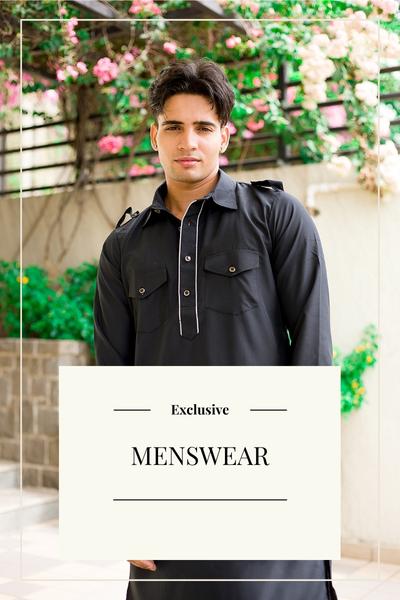Indian Fabrics: Types, Trends & What to Look for When Buying
India has always been known for its textile. The Indus Valley Civilization introduced textiles in the region as early as the 5th millennium BC and relied on homespun cotton for creating all types of garments. For adding color to the fabric, they used indigo. From their bronze age contributions evolved a rich textile culture that has helped shape Indian heritage.
Wherever you go, China, Egypt, or Rome, there are traces of Indian textiles that can be found in those markets. Each fabric opens avenues of subset of fabrics serving their own function and different occasions, which have flourished through the test of time and beloved by the masses. If you are new to Indian fabrics and want to learn more, you have come to the right place. Read on to learn more.
Types of Indian Fabrics
1. Cotton | Occasions: Casual to Semi-Formal
One of the most common types of Indian fabrics that is worn by just about everyone, especially during the summer months is cotton. The reason behind its extensive use is that it is highly versatile, affordable, comfortable to wear, and lightweight. Cotton suits the hot and humid climate conditions of the Indian Subcontinent, which is why there are so many variations of it compared to the western world. It has been worn since ancient times and continues to be worn by Indians today.
2. Silk | Occasions: Semi-Formal to Formal
Another type of Indian fabric that you should know is silk. It is made using the natural fiber produced by caterpillars. Silk is worn at Indian weddings throughout the world, appreciated for its shining appearance and soft textures. As silk has a prism-like structure, it refracts light and produces a variety of colors. It is a natural fiber fabric; you can wear silk throughout the year since it can be weaved to different thicknesses and weights.
3. Linen | Occasions: Casual to Formal
The flax plant is used to create linen. It is a lot more difficult to produce than cotton and will typically cost more. However, it is absorbent and stronger. In fact, it dries much faster than cotton. As it boasts high heat conductivity, you will notice that it feels cool when you touch it. Linen does not stretch as it is a thick fabric, which makes adding embroidery more of a challenge. Although it has low elasticity, it can break if you iron and fold it continuously.
4. Wool | Occasions: Casual to Formal, Seasonal
Wool is also an Indian fabric that is commonly worn. It is made using the fur of animals such as sheep. Even though Australia, China, and New Zealand are the main producers of wool, the fabric is widely available in India. Wool is worn during the winter to keep warm as it impedes heat transfers and is the perfect fabric for insulation. It also absorbs sound and water. However, it is worth mentioning that there are some people who are actually allergic to this fabric.
5. Chiffon Wool | Occasions: Semi-Formal to Formal, Seasonal
Chiffon is a transparent and lightweight fabric that originates in France. In fact, the word “Chiffon” means cloth in French. It is a fine mesh that is more transparent than most fabrics. A variety of yarns such as nylon, silk, and cotton are used to make chiffon. It is commonly used in sarees. The material is an appropriate choice for summers in the Indian Subcontinent.
Popular Indian Fabrics
Now that you know about the different types of Indian fabrics that are commonly worn by the populace, it is important that you know about the Indian fabrics that are popular. These are mentioned below.
1. Silk
Silk is a popular option in India as it signifies sophistication, class, and elegance. It represents luxury better than any other fabric. You will find its pristine shine to be a major reason why people use it in the country. There is nothing better than a silk saree. Generally, silk is the preferred fabric of Indian weddings and festivals.
2. Cotton
Since India tends to be quite hot throughout the year, cotton is always in demand. It is a comfortable and breathable fabric that you will enjoy wearing. A great thing about cotton is that it is available in different styles and cuts. In addition to this, cotton blends with just about every fabric to create beautiful outfits such as a twill or a voile. Cotton Kurtis are widely worn as they allow Indian women to blend western culture with traditional elements.
3. Georgette
Lastly, georgette is also a popular Indian fabric that you should consider getting. It is a mix of pure and faux fabric. The faux material is created using nylon and polyester, whereas the pure material mostly comprises silk. The graceful loom, soft texture, and delicate appearance of georgette make it a great option for those of you who are looking for a bouncy look. There are countless designer georgette sarees available.
4. Chiffon
Another popular Indian fabric that is made using man-made fibers is chiffon. It's simple and shiny weaves give it a unique touch. Chiffon is normally used for evening and formal wear as it offers a chic look. Its slippery texture makes it difficult to work with. Indians love silk chiffon as it is elegant and regal.
5. Velvet
Velvet is associated with royalty due to how it offers a polished and refined look. It bedazzles everyone. As it is an expensive fabric, it is reserved for important events. Velvet is combined with different fabrics for creating stunning outfits. Man-made fiber is used for producing velvet. The best thing about velvet is that it can be easily dyed into a diverse range of color shades.
What to Look for in Fabrics When Buying Indian Clothing?
Shopping for Indian fabrics is a simple art form that you need to master if you want to benefit from massive savings and get your hands on a fabric that lasts you a long time. Although you might be drawn to the patterns and color of the fabrics, you also need to consider other things. These are mentioned below.
1. Quality
The first thing that you should evaluate when buying Indian fabric is quality and stitching. Before you even check to see if it is nylon, polyester, cotton, or linen, you should get a feel of the fabric to determine if it is high quality. It should be blemish-free.
2. Type of Fabric
Generally, fabrics are categorized as synthetic, natural, or a mix of both. Some popular synthetic fabrics that you might want to get include rayon and polyester. On the other hand, natural fabrics include silk, linen, and cotton.
Fabrics that are a mix of synthetic and natural fibers are also worth getting. However, you have to ensure that they are in excellent condition. Keep in mind that natural fabrics cost the most, whereas synthetic fabrics cost a lot less.
3. Color Fastness
The color of the fabric should be even. There should be no streaks or spots on it. Hence, you must carefully scrutinize the fabrics to identify signs of uneven dyeing. If any of the areas have fading color, you might want to opt for a different option. If the fabric has light colors, chances are that the color would fade after you wash it a few times. You can test the fabric using a wet white handkerchief to see if the color rubs onto it.
4. Location and Suitability
When shopping for fabric, you are likely to have an idea about the type of garment you would wear. For instance, you cannot make a jacket with chiffon or sports clothes with cotton. You should also consider the occasion to ensure that it is suitable. Wool would not be the best option during a summer wedding. Similarly, you cannot wear a chiffon dress during winter.
5. Shrinkage
To shop for the right fabric, you also have to think about shrinkage. The last thing you want is for the fabric to shrink after each wash. As each fabric does not shrink the same, you should get extra fabric. It will ensure that you have enough fabric even after a few washes.
6. Color
In addition to the above, you also have to think about the color of the fabric. You must pick a color that suits your skin tone. It would ensure that you look beautiful. Moreover, if the fabric you are buying is for a specific occasion, you should ensure that the color of the fabric suits the theme. Otherwise, you would fail to fit in with your friends and family members.
7. Pattern
Although there are all types of patterned fabrics available, you have to be extra careful when shopping for a patterned fabric as it can look different in front of lighting. As the pattern would be repeated throughout the fabric, it should suit your style. The entire length of the fabric should not have any distortion of pattern as it would ruin the entire look of the garment. Choose a pattern that represents the type of fashion that you are interested in.
Conclusion
After you have finished reading our guide, you will know everything there is to know about Indian fabrics. As India is a diverse country in terms of culture, traditions, geography, and beliefs, it is important that you consider everything to shop for the best fabric. There are all types of fabrics available. Hence, you have plenty of options no matter what your preferences might be.
If you're a blogger or creative writer and would like to share your expertise or experiences with Indian fashion, culture or anything related, please feel free to contact us at contact@indiafashionxpress.com.












